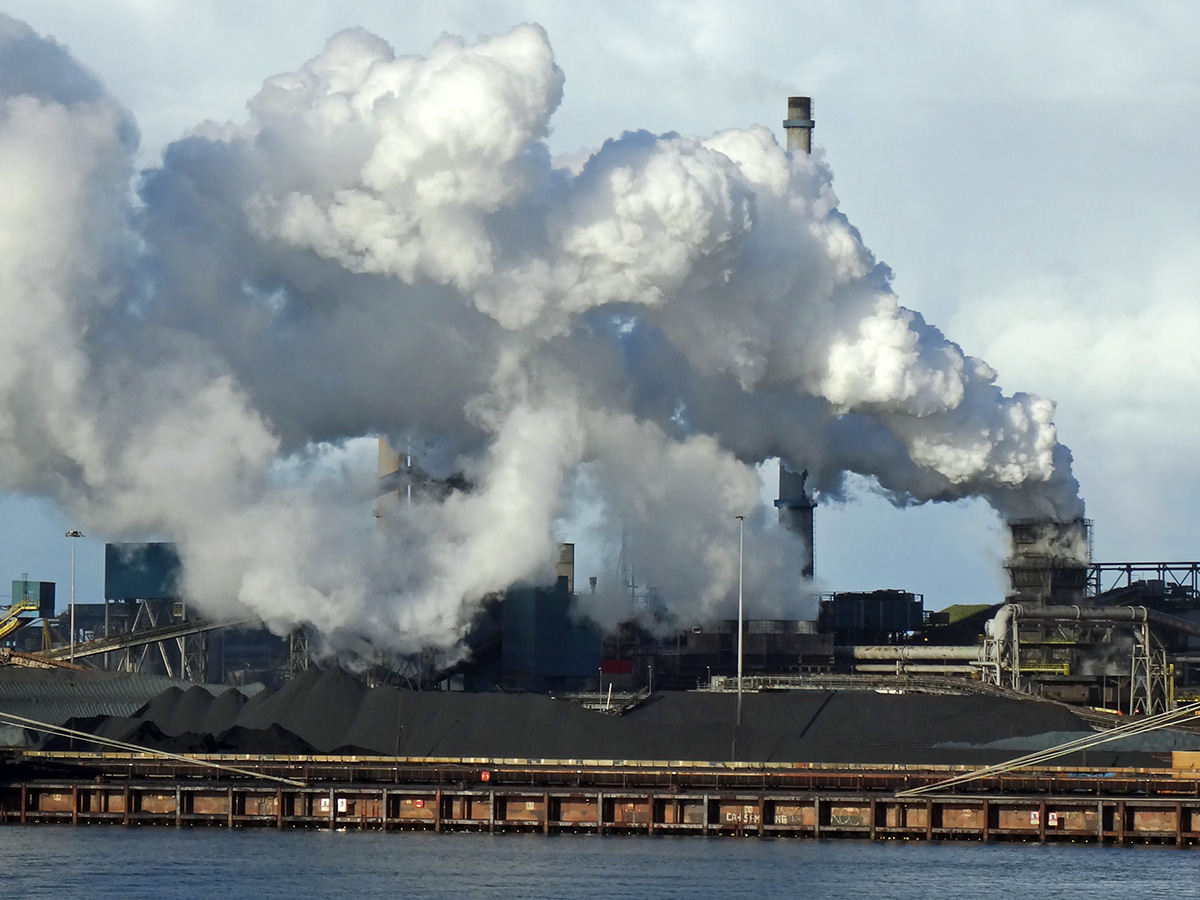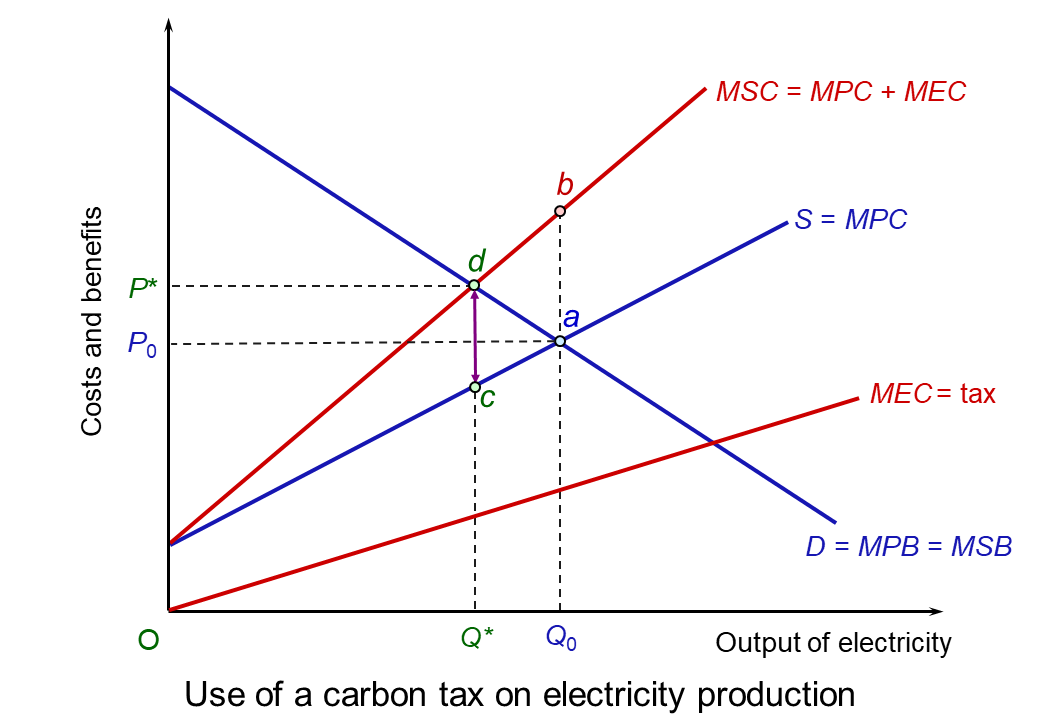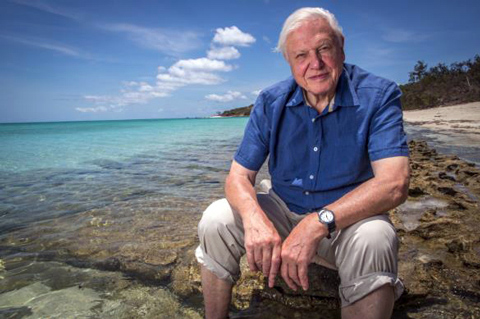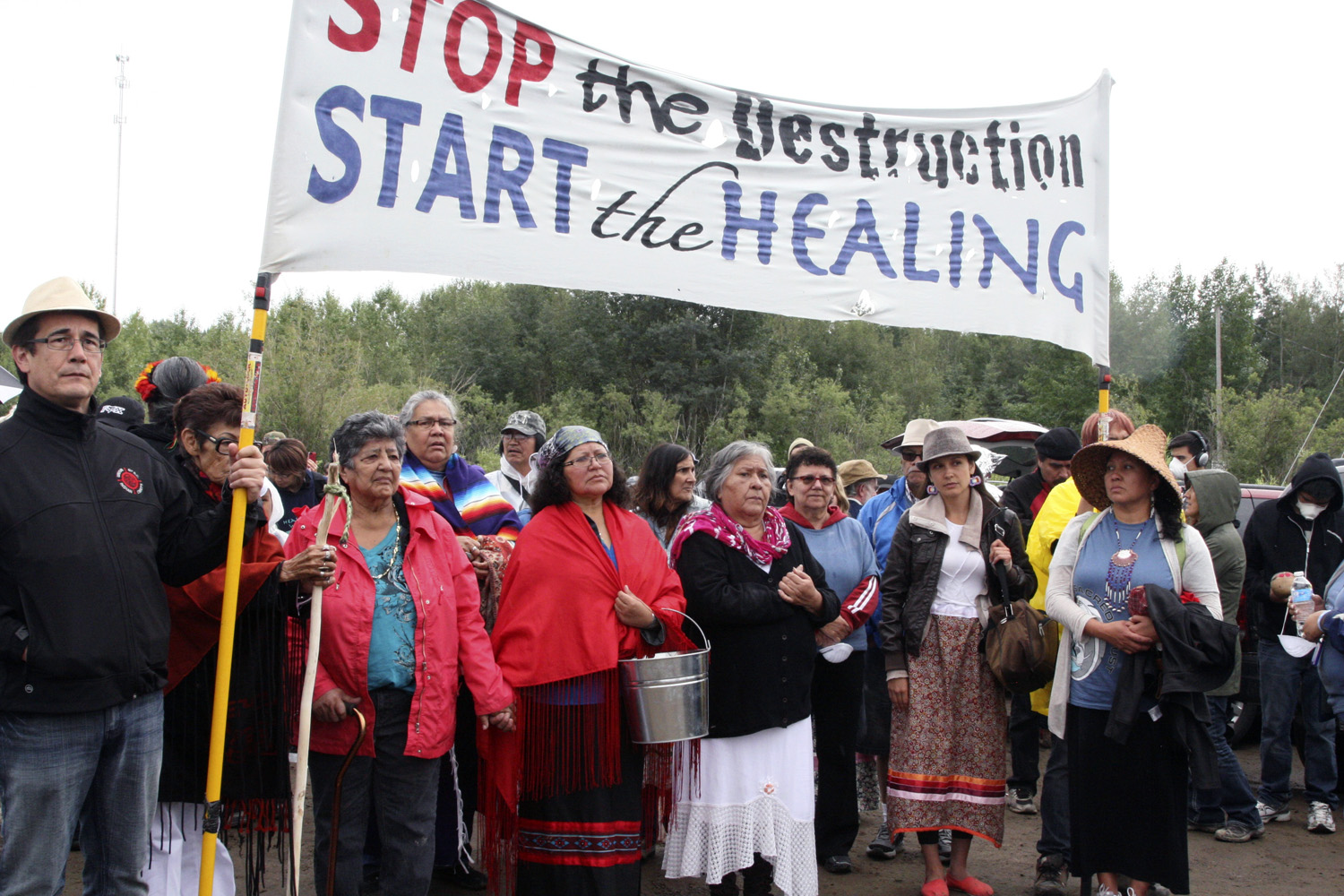 On 12 February, it was announced that The Body Shop UK was entering administration. With 199 shops across the country, if this leads to the collapse of the business, some 2000 jobs will be lost. The business has been struggling since 2020 and poor sales this last Christmas led the new owners, the pan-European alternative investment firm, Aurelius, to appoint administrators.
On 12 February, it was announced that The Body Shop UK was entering administration. With 199 shops across the country, if this leads to the collapse of the business, some 2000 jobs will be lost. The business has been struggling since 2020 and poor sales this last Christmas led the new owners, the pan-European alternative investment firm, Aurelius, to appoint administrators.
This could potentially begin an insolvency process that could result in the closure of some or all of the shops. This would spell the end of an iconic brand that, since its founding in 1976, has been associated with natural, ethically sourced and environmentally friendly products. Aurelius has already sold The Body Shop business in most of mainland Europe and in parts of Asia to an unnamed buyer. It is unclear what will happen to the approximately 2800 stores and 8000 employees in 70 countries outside the UK.
Origins of The Body Shop1
 The Body Shop was founded in 1976 and shot to fame in the 1980s. It stood for environmental awareness and an ethical approach to business. But its success had as much to do with what it sold as what it stood for. It sold natural cosmetics – Raspberry Ripple Bathing Bubbles and Camomile Shampoo – products that proved immensely popular with consumers.
The Body Shop was founded in 1976 and shot to fame in the 1980s. It stood for environmental awareness and an ethical approach to business. But its success had as much to do with what it sold as what it stood for. It sold natural cosmetics – Raspberry Ripple Bathing Bubbles and Camomile Shampoo – products that proved immensely popular with consumers.
Its profits increased from a little over £1m in 1985 (€1.7m) to approximately £65m (€77.5m) in 2012. Although profits then slipped, falling to €65.3m in 2014 and €54.8m in 2015, its profit growth in new markets over that same period was 12.4%.
Sales revenue, meanwhile, grew even more dramatically, from £4.9m in 1985 to approximately €967.2m in 2015. By 2015, Body Shop International had over 3100 stores, operating in 61 countries.
What made this success so remarkable is that The Body Shop did virtually no advertising. Its promotion stemmed largely from the activities and environmental campaigning of its founder, Anita Roddick, and the company’s uncompromising claim that it sold only ‘green’ products and conducted its business operations with high ethical standards. It actively supported green causes such as saving whales and protecting rainforests, and it refused to allow its products to be tested on animals. Perhaps most surprising in the world of big business at the time was its high-profile initiative ‘trade not aid’, whereby it claimed to pay ‘fair’ prices for its ingredients, especially those supplied by people in developing countries who were open to exploitation by large companies.
 The growth strategy of The Body Shop focused upon developing a distinctive and highly innovative product range, and at the same time identifying these products with major social issues of the day, such as the environment and animal rights.
The growth strategy of The Body Shop focused upon developing a distinctive and highly innovative product range, and at the same time identifying these products with major social issues of the day, such as the environment and animal rights.
Its initial expansion was based on a process of franchising, where individuals opened Body Shops which were then supplied by the company with its range of just 19 products. Then, in 1984 the company went public. Following its flotation, the share price rose from just 5p to a high of 370p in 1992.
In the 1990s, however, sales growth was less rapid. By 1998, earnings had collapsed by 90% and the share price fell to 117p. Shareholders forced Anita Roddick to step down as Chief Executive, but for a while she and her husband remained as co-chairs. In 2002, they stepped down as co-chairs, by which time profits had fallen to £20.4m. In 2003 she was awarded in knighthood and became Dame Anita Roddick. Sales then grew rapidly from 2004 to 2006 from €553m to €709m.
Acquisition of The Body Shop by L’Oréal
A dramatic event, however, occurred in 2006 when The Body Shop was sold to the French cosmetics giant, L’Oréal, which was 26% owned by Nestlé, The event resulted in the magazine Ethical Consumer downgrading The Body Shop’s ethical rating from 11 out of 20 to a mere 2.5 and calling for a boycott of the company. Three weeks after the sale, the daily BrandIndex recorded an 11 point drop in The Body Shop’s consumer satisfaction rating from 25 to 14.
There were several reasons for this. L’Oréal’s animal-testing policies conflicted with those of The Body Shop and L’Oréal was accused of being involved in price-fixing with other French perfume houses. L’Oréal’s part-owner, Nestlé, was also subject to various criticisms for ethical misconduct, including promoting formula milk rather than breast milk to mothers with babies in developing countries and using slave labour in cocoa farms in West Africa.
 Anita Roddick, however, believed that, by taking over The Body Shop, L’Oréal would develop a more ethical approach to business. Indeed, it did publicly recognise that it needed to develop its ethical and environmental policies.
Anita Roddick, however, believed that, by taking over The Body Shop, L’Oréal would develop a more ethical approach to business. Indeed, it did publicly recognise that it needed to develop its ethical and environmental policies.
L’Oréal adopted a new Code of Business Ethics in 2007 and gained some external accreditation for its approach to sustainability and ethics. It was ranked as one of the world’s 100 most ethical companies by Ethisphere in 2007 and, in 2016, it was again part of this list for the seventh time.
L’Oréal set itself three targets as part of its environmental strategy (2005–15), including a 50% reduction in greenhouse gas emissions, water consumption and waste per finished product unit. It made a donation of $1.2m to the US Environment Protection Agency to help bring an end to animal testing and, in March 2013, it announced a ‘total ban on the sale in Europe of any cosmetic product that was tested on animals or containing an ingredient that was tested on animals after this date.’ It also promised that ‘By 2020, we will innovate so that 100% of products have an environmental or social benefit.’
 Sadly, Anita Roddick died in 2007 and so was not able to witness these changes.
Sadly, Anita Roddick died in 2007 and so was not able to witness these changes.
L’Oréal also looked to inject greater finance into the company aimed at improving the marketing of products. In autumn 2006 a transactional website was launched and there have been larger press marketing campaigns. Profits continued to rise in 2006 and 2007, but fell back quite dramatically from €64m in 2007 to €36m in 2008 as recession hit the high streets. They fell by a further 8% in 2009, but significant growth was seen in the following three years: 2010, up 20.3% to €65.3m; 2011, up 4.3% to €68.1m; 2012, up 13.8% to €77.5m.
From L’Oréal to Natura to Aurelius to ?
 From 2013, the financial performance of The Body Shop deteriorated. Profits fell by 38% in 2016 to just €34m, with sales falling by 5%. In June 2017, L’Oréal announced that it had agreed to sell The Body Shop for €1bn (£877m) to Natura Cosmeticos, the largest Brazilian cosmetics business. Natura was awarded ‘B Corp’ status in 2014 as it met certain standards for environmental performance, accountability and transparency. In 2019, The Body Shop was separately certified as a B Corp.
From 2013, the financial performance of The Body Shop deteriorated. Profits fell by 38% in 2016 to just €34m, with sales falling by 5%. In June 2017, L’Oréal announced that it had agreed to sell The Body Shop for €1bn (£877m) to Natura Cosmeticos, the largest Brazilian cosmetics business. Natura was awarded ‘B Corp’ status in 2014 as it met certain standards for environmental performance, accountability and transparency. In 2019, The Body Shop was separately certified as a B Corp.
Initial indications for The Body Shop under its new owners seemed good, with net revenue rising by 36% in 2018 and 6.3% in 2019. 2020 saw strong growth in sales, with a rise in online sales more than offsetting the effect of store closures during the pandemic. Its market share peaked in 2020 at 1.4%. However, with the cost-of-living crisis following the pandemic and the Russian invasion of Ukraine, many consumers switched to cheaper brands and cheaper outlets, such as Boots and Superdrug, sacrificing environmental and ethical concerns in favour of value for money. As a result, The Body Shop’s market share fell, dropping to 0.8% in 2022 and not picking up in 2023.
This prompted Natura to sell the business to Aurelius. Aurelius hoped to revitalise The Body Shop by promoting its core values and through partnerships or concessions with major retailers, such as John Lewis or Next. However, as we saw above, after a poor Christmas and a weaker capital base and higher cost commitments than initially thought by Aurelius, the new owner filed to put The Body Shop into administration.
What will come of the administration process remains to be seen. Perhaps some of the more profitable stores will be saved; perhaps there will be an expansion of the online business; perhaps partnerships will be sought with major retailers. We shall see.
1 Some of this section is based on Case Study 9.3 from Economics (11th edition).
Videos
Articles
- Aurelius Acquires Iconic Global Beauty Brand and Retailer, The Body Shop
Aurelius news (14/11/23)
- Back to the future? What’s next for the Body Shop brand
Marketing Week, Niamh Carroll (14/11/23)
- The Body Shop appoints administrators for UK business
Financial Times, Laura Onita and Will Louch (13/2/24)
- The Body Shop set to appoint administrators for UK arm
Financial Times, Laura Onita (10/2/24)
- The Body Shop collapses into administration in UK
The Guardian, Sarah Butler and Rob Davies (13/2/24)
- The Body Shop UK in administration – what went wrong?
Sky News, James Sillars (13/2/24)
- Body Shop UK jobs and stores at risk in race to save firm
BBC News (13/2/24)
- From cult status to closure fears — what happened to The Body Shop?
CBC News, Natalie Stechyson (12/2/24)
- Headed for administration, why did The Body Shop fail?
Startups, Richard Parris (12/2/24)
- Comment: The Body Shop’s woes hit just as it should be at its most relevant
TheIndustry.beauty, Lauretta Roberts (13/2/24)
- The collapse of The Body Shop shows that ‘ethical’ branding is not a free pass to commercial success
The Conversation, Kokho Jason Sit (15/2/24)
Questions
- What assumptions did The Body Shop made about the ‘rational consumer’?
- How would you describe the aims of The Body Shop (a) in the early days under Anita Roddick; (b) under L’Oréal; (c) under Aurelius?
- How has The Body Shop’s economic performance been affected by its attitudes towards ethical issues?
- What has Lush done right that The Body Shop has not?
- What will the administrators seek to do?
- Find out what has happened to The Body Shop outlets in mainland Europe?
 The United Nations International Panel on Climate Change (IPCC) has just published its most comprehensive report so far. It finds that ‘human activities, principally through emissions of greenhouse gases, have unequivocally caused global warming’. This has led to widespread and rapid changes in climate and biodiversity and to more extreme weather patterns, such as droughts, floods and hurricanes. What is more, the distribution of these effects is uneven, with communities who have contributed the least to current climate change being disproportionately affected.
The United Nations International Panel on Climate Change (IPCC) has just published its most comprehensive report so far. It finds that ‘human activities, principally through emissions of greenhouse gases, have unequivocally caused global warming’. This has led to widespread and rapid changes in climate and biodiversity and to more extreme weather patterns, such as droughts, floods and hurricanes. What is more, the distribution of these effects is uneven, with communities who have contributed the least to current climate change being disproportionately affected.
At the 2015 COP21 climate change conference in Paris (see also), it was agreed to adopt policies to limit the increase in global temperatures to ‘well below’ 2°C above pre-industrial levels and to make an effort to limit it to 1.5°C. Global temperatures have already risen 1.1°C above 1850–1900 levels and are set to reach 1.5°C in the early 2030s. Every increment of global warming will intensify ‘multiple and concurrent hazards’.
 Deep, rapid and sustained reductions in emissions would slow down the rise in global temperatures, but even with such reductions, temperatures will still exceed 1.5°C in the next few years and, even under the best-case scenario, would not fall below 1.5°C again until the end of the 21st century. Under more pessimistic scenarios, global temperatures could rise to 2.7°C above pre-industrial levels by the end of the century under an intermediate greenhouse gas emissions scenario and to 4.4°C under a very high emissions scenario. Anything above 2°C would be likely to have catastrophic effects. The longer countries wait to take action, the greater the rise in global temperatures and hence the greater the damage and the more costly it will be to rectify it.
Deep, rapid and sustained reductions in emissions would slow down the rise in global temperatures, but even with such reductions, temperatures will still exceed 1.5°C in the next few years and, even under the best-case scenario, would not fall below 1.5°C again until the end of the 21st century. Under more pessimistic scenarios, global temperatures could rise to 2.7°C above pre-industrial levels by the end of the century under an intermediate greenhouse gas emissions scenario and to 4.4°C under a very high emissions scenario. Anything above 2°C would be likely to have catastrophic effects. The longer countries wait to take action, the greater the rise in global temperatures and hence the greater the damage and the more costly it will be to rectify it.
‘For any given future warming level… projected long-term impacts are up to multiple times higher than currently observed (high confidence). Risks and projected adverse impacts and related losses and damages from climate change escalate with every increment of global warming (very high confidence). Climatic and non-climatic risks will increasingly interact, creating compound and cascading risks that are more complex and difficult to manage (high confidence).’ (Paragraph B2)
But the report is not all ‘doom and gloom’. It is possible to limit global warming to 1.5°C or only a little over by making rapid, deep and, in most cases, immediate greenhouse gas emissions reductions in all sectors and reaching net zero emissions in the early 2050s. Science and technology have the answers – answers that are now much cheaper and more available than back in 2015 when the 1.5°C target was agreed. But what it does require is doing ‘everything, everywhere, all at once’. And that requires political will and the right economic incentives.
The politics and economics of achieving net zero
In terms of the politics, there is general global agreement by governments about the likely effects of climate change. And most governments agree that action needs to be taken. However, there are three key political problems.
The first is that the costs of action will be borne now, while the benefits of action will accrue over a much longer period of time. This links to the second problem – the mismatch between the lives of governments and the long-term effects of climate change. If governments put off doing anything now and merely promise that something will be done in the future, they will not have to take unpopular actions, such as raising taxes on energy, private transport and certain goods or banning various activities. Future governments will have to sort things out, by when, although the problems will be greater, the existing politicians will no longer be in power.
 The third problem concerns the distribution of the costs and benefits of action. The major emitters of carbon are the rich countries, while the major sufferers are poor people in countries subject to drought, flooding and rising sea levels. Not surprisingly, who should cut down on emissions and pay for the mitigation necessary in many of the poorer countries is a difficult political issue, which is why it’s much easier to say what needs to be achieved overall than precisely what measures should be taken by which countries.
The third problem concerns the distribution of the costs and benefits of action. The major emitters of carbon are the rich countries, while the major sufferers are poor people in countries subject to drought, flooding and rising sea levels. Not surprisingly, who should cut down on emissions and pay for the mitigation necessary in many of the poorer countries is a difficult political issue, which is why it’s much easier to say what needs to be achieved overall than precisely what measures should be taken by which countries.
These problems reflect the fact that many, if not most, of the environmental costs of production and consumption are external costs – costs borne, not by the direct producer or consumer, but by other people at other places and/or in the future.
Nevertheless, the relative costs of moving to greener production and consumption are falling. The costs of renewable energy, including solar power, onshore and offshore wind and hydroelectric power are falling relative to that generated from fossil fuels. At the same time, the take up of electric cars is likely to continue rising as battery technology improves. This does, of course, require an increase in charging infrastructure. Domestic heat pump technology is improving and home insulation methods are becoming more efficient.
Persuading consumers and firms to take account of environmental externalities could in part be achieved by education. It makes it much easier for politicians to take appropriate action now if their populations are on board. There has been increasing awareness over the years of the environmental impact of people’s actions. People have become more willing to take responsibility for the world that future generations will inherit. This is helped both by education in schools and colleges and by frequent items in the media.
But incentives also have a major part to play. To internalise environmental externalities, external costs could be taxed and external benefits subsidised.
The effect of a carbon tax on production
 The use of taxes to reduce activities with negative environmental externalities is illustrated in the diagram (click here for a PowerPoint). It takes the case of carbon emissions from coal-fired electricity generation in a large country. To keep the analysis simple, it is assumed that all electricity in the country is generated from coal-fired power stations and that there are many such power stations, making the market perfectly competitive.
The use of taxes to reduce activities with negative environmental externalities is illustrated in the diagram (click here for a PowerPoint). It takes the case of carbon emissions from coal-fired electricity generation in a large country. To keep the analysis simple, it is assumed that all electricity in the country is generated from coal-fired power stations and that there are many such power stations, making the market perfectly competitive.
It is assumed that all the benefits from electricity production accrue solely to the consumers of electricity (i.e. there are no external benefits from consumption). Marginal private and marginal social benefits of the production of electricity are thus the same (MPB = MSB). The curve slopes downwards because, with a downward-sloping demand for electricity, higher output results in a lower marginal benefit (diminishing marginal utility).
Competitive market forces, with producers and consumers responding only to private costs and benefits, will result in a market equilibrium at point a in the diagram: i.e. where demand equals supply. The market equilibrium price is P0 while the market equilibrium quantity is Q0. However the presence of external costs in production means that MSC > MPC. In other words, MEC = b – a.
The socially optimal output would be Q* where P = MSB = MSC, achieved at the socially optimal price of P*. This is illustrated at point d and clearly shows how external costs of production in a perfectly competitive market result in overproduction: i.e. Q0 > Q*. From society’s point of view, too much electricity is being produced and consumed.
If a carbon tax of d – c is imposed on the electricity producers, it will now be in producers’ interests to produce at Q*, where their new private marginal costs (including tax) equals their marginal private benefit.
But this brings us back to the politics of measures to reduce emissions. People do not like paying higher taxes. In his latest Budget, the UK Chancellor, Jeremy Hunt, decided not to raise fuel duties by the 12p that had been previously planned, despite fuel prices having recently fallen. Meanwhile, charging prices for electric cars have risen.
Other economic measures
 A simpler method for dealing with environmental externalities is ban certain activities that omit CO2. For example, in the UK there will be a ban on the sale of new petrol and diesel cars and vans from 2030 (with the exception of some low-emission hybrids until 2035). In the EU there will be a similar ban from 2035. Clearly, such measures are only suitable when there are non-emitting alternatives.
A simpler method for dealing with environmental externalities is ban certain activities that omit CO2. For example, in the UK there will be a ban on the sale of new petrol and diesel cars and vans from 2030 (with the exception of some low-emission hybrids until 2035). In the EU there will be a similar ban from 2035. Clearly, such measures are only suitable when there are non-emitting alternatives.
Another alternative is a cap-and-trade system, such as the European Emissions Trading Scheme. It involves setting quotas for emissions and allowing firms which manage to cut emissions to sell their surplus permits to less efficient firms. This puts a price pressure on firms to be more efficient. But the quotas (the ‘cap’) must be sufficiently tight if emissions are going to be cut to desired levels. Nevertheless, it is an efficient way of cutting emissions as it gives a competitive advantage to low-emission producers.
Conclusion
If the problem of global warming is to be limited to 1.5°C, or only very little above, multiple solutions will need to be found and there must be a combination of political will, economic incentives and the mobilisation of scientific and technical know-how. As the Secretary-General of the United Nations, António Guterres, stated in launching the new report:
This report is a clarion call to massively fast-track climate efforts by every country and every sector and on every timeframe. In short, our world needs climate action on all fronts – everything, everywhere, all at once.
Report
Videos
Articles
- Climate damage is worsening faster than expected, but there’s still reason for optimism – 4 essential reads on the IPCC report
The Conversation, Stacy Morford at al (20/3/23)
- UN climate scientists are running out of ways to warn us
Vox, Rebecca Leber and Umair Irfan (20/3/23)
- Expert reaction to the AR6 synthesis report, as published by the IPCC
Science Media Centre (20/3/23)
- ‘The climate time-bomb is ticking’: The world is running out of time to avoid catastrophe, new UN report warns
CNN, Laura Paddison (20/3/23)
- UN climate report: Scientists release ‘survival guide’ to avert climate disaster
BBC News, Matt McGrath and Georgina Rannard (20/3/23)
- Five things we’ve learned from UN climate report
BBC News, Matt McGrath (20/3/23)
- Climate change: Can we really take CO2 back out the air?
BBC Future, Jocelyn Timperley (21/3/23)
- Scientists deliver ‘final warning’ on climate crisis: act now or it’s too late
The Guardian, Fiona Harvey (20/3/23)
- From climate change ‘certainty’ to rapid decline: a timeline of IPCC reports
The Guardian, Damian Carrington (20/3/23)
- Humanity at the climate crossroads: highway to hell or a livable future?
The Guardian, Damian Carrington (20/3/23)
 IPCC report: Here’s how we can defuse the ‘ticking time bomb’ of climate change
IPCC report: Here’s how we can defuse the ‘ticking time bomb’ of climate changeEuronews, Rosie Frost (21/3/23)
- Now or never: One of the biggest climate reports ever shows time is running out
NBC News, Evan Bush and Denise Chow (20/3/23)
Questions
- Why might countries not do ‘everything, everywhere, all at once’ to avert climate change?
- What might an optimist conclude from the ICC report?
- To what extent is climate change an economic problem?
- On a diagram similar to the one above, show how a subsidy could be used to internalise positive externalities.
- How might countries reduce the consumption of fossil fuels in the most efficient way? Are they likely to want to do this? Explain.
- Is a ‘cap-and-trade’ (tradable permits) system (a) an effective means of reducing emissions; (b) an efficient system?
 We rely on the natural environment as a source of food and raw materials, for recreation and health and as a dump for waste. Yet, too often, little or no monetary value is placed on the environment. GDP, the standard measure of economic success, is based on market values; and the market undervalues the environment. The prices of the goods we buy bear little relationship with the environmental costs of their production. And yet we all bear the costs (some more than others) as the planet warms, as rain forests are cut down, as seas become polluted and as biodiversity is destroyed.
We rely on the natural environment as a source of food and raw materials, for recreation and health and as a dump for waste. Yet, too often, little or no monetary value is placed on the environment. GDP, the standard measure of economic success, is based on market values; and the market undervalues the environment. The prices of the goods we buy bear little relationship with the environmental costs of their production. And yet we all bear the costs (some more than others) as the planet warms, as rain forests are cut down, as seas become polluted and as biodiversity is destroyed.
A major study commissioned by the UK government has just been published. The Economics of Biodiversity: The Dasgupta Review looks at how we need to rethink the value we attach to nature and embed that within economic decisions. As the Review begins by saying, ‘We are part of Nature, not separate from it’. Nature is an asset on which we all depend and yet is is hugely undervalued. The Amazon rainforest is seen by developers as valuable only for clearance for cattle, soy or mining. In these terms, Amazon the company, valued at over US$1 trillion, is worth more than the Amazon rainforest. As page 2 of the Headline Messages states:
Nature’s worth to society – the true value of the various goods and services it provides – is not reflected in market prices because much of it is open to all at no monetary charge. These pricing distortions have led us to invest relatively more in other assets, such as produced capital, and underinvest in our natural assets.
 Moreover, aspects of Nature are mobile; some are invisible, such as in the soils; and many are silent. These features mean that the effects of many of our actions on ourselves and others – including our descendants – are hard to trace and go unaccounted for, giving rise to widespread ‘externalities’ and making it hard for markets to function well.
Moreover, aspects of Nature are mobile; some are invisible, such as in the soils; and many are silent. These features mean that the effects of many of our actions on ourselves and others – including our descendants – are hard to trace and go unaccounted for, giving rise to widespread ‘externalities’ and making it hard for markets to function well.
But this is not simply a market failure: it is a broader institutional failure too. Many of our institutions have proved unfit to manage the externalities. Governments almost everywhere exacerbate the problem by paying people more to exploit Nature than to protect it, and to prioritise unsustainable economic activities. A conservative estimate of the total cost globally of subsidies that damage Nature is around US$4 to 6 trillion per year. And we lack the institutional arrangements needed to protect global public goods, such as the ocean or the world’s rainforests.
The Review urges a complete rethinking of environmental value. We need to recognise that we are embedded in Nature and that biodiversity has intrinsic worth – perhaps even moral worth. Only this way can correct economic decisions be made.
To detach Nature from economic reasoning is to imply that we consider ourselves to be external to Nature. The fault is not in economics; it lies in the way we have chosen to practise it.
Policy recommendations
The Review highlights some specific policies that can be adopted to attach value to the environment. It makes three major recommendations.
- Ensure that our demands on Nature do not exceed its supply, and that we increase Nature’s supply relative to its current level. This involves countries and their citizens accepting that they are stewards of the land, seas and atmosphere. This means making conservation central to decision making in areas such a food production, raw material extraction, energy generation and recycling. A range of policy instruments can be used, including taxes and subsidies, laws and regulations, public investment and provision of services.
 Change our measures of economic success to guide us on a more sustainable path. This would involve amending measures, such as GDP, to include environmental degradation (-ve) and improvement (+ve) and national wealth to include all natural assets, such as biodiversity and land, air, sea and water quality. This would involve ‘natural capital accounting’. This, in turn, would be helped by global standardised presentation of data and modelling approaches, and the provision of data on the environment by statistical agencies.
Change our measures of economic success to guide us on a more sustainable path. This would involve amending measures, such as GDP, to include environmental degradation (-ve) and improvement (+ve) and national wealth to include all natural assets, such as biodiversity and land, air, sea and water quality. This would involve ‘natural capital accounting’. This, in turn, would be helped by global standardised presentation of data and modelling approaches, and the provision of data on the environment by statistical agencies.
- Transform our institutions and systems – in particular our finance and education systems – to enable these changes and sustain them for future generations. Institutional arrangements should be put into place that allow the pooling of environmental information at local, national and global levels. Then there will need to be international subsidies to countries with environments that should be protected for the global good (e.g. rainforests) and international charges for the use of global common resources, such as oceans and the atmosphere. ‘What is ultimately required is a set of global standards underpinned by credible, decision-grade data, which businesses and financial institutions can use to fully integrate Nature-related considerations into their decision-making, and assess and disclose their use of, and impact on, Nature.’ But this must also be backed up by education so as to encourage people to be more conservationist in their behaviour and attitudes.
It is hoped that the Review will be a major focus of two upcoming United Nations conferences: on Biological Diversity (COP15) in Kunming, China in May 2021 and on Climate Change (COP26) in Glasgow in November 2021. The authors of the Review hope that these conferences will set new environmental commitments and establish the necessary institutional arrangements to ensure such commitments are met. This will involve changing the approach to economic decision making at all levels in society.
 As Sir David Attenborough states in his foreword to the Review,
As Sir David Attenborough states in his foreword to the Review,
Economics is a discipline that shapes decisions of the utmost consequence, and so matters to us all. The Dasgupta Review at last puts biodiversity at its core and provides the compass that we urgently need. In doing so, it shows us how, by bringing economics and ecology together, we can help save the natural world at what may be the last minute – and in doing so, save ourselves.
Articles
The Dasgupta Review
Questions
- To what extent is the Dasgupta Review an updated version of the Stern Review of 2006?
- Draw a diagram to illustrate how the existence of negative externalities will lead to production levels above the social optimum.
- To what extent is Nature a public good?
- What is meant by the ‘tragedy of the commons’? How is it relevant to the exploitation of Nature?
- How could market incentives be changed by governments so as to halt the loss of biodiversity?
- Following an international agreement to protect the natural environment, what sanctions could be imposed on countries or companies which violate the agreement? How effective would they be?
 Back in November, when Joe Biden had just been elected, we considered some of his proposed policies to tackle climate change (see A new era for climate change policy?). On 20th January, the day of his inauguration, he signed 17 executive orders overturning a range of policies of the Trump presidency. Further executive orders followed. Some of these related directly to climate change.
Back in November, when Joe Biden had just been elected, we considered some of his proposed policies to tackle climate change (see A new era for climate change policy?). On 20th January, the day of his inauguration, he signed 17 executive orders overturning a range of policies of the Trump presidency. Further executive orders followed. Some of these related directly to climate change.
The first was to cancel the Keystone XL oil pipeline project. If it had gone ahead, it would have transported 830 000 barrels of oil per day from the Alberta tar sands in Canada to refineries on the Gulf Coast of Texas. It would have involved building a new pipeline from Alberta to Nebraska, where it would have linked to an existing pipeline to Texas. Extracting oil from tar sands is a particularly dirty process, involves cutting down large areas of forest (a carbon sink) and total emissions are around 20% greater per barrel than from conventional crude.
 The pipeline would have cut across First Nations land and any spills would have been highly toxic to the local environment. In terms of profitability, returns on tar sands oil extraction and transportation are very low. This is likely to remain the case as oil prices are likely to remain low, with greater global energy efficiency and the switch to renewables.
The pipeline would have cut across First Nations land and any spills would have been highly toxic to the local environment. In terms of profitability, returns on tar sands oil extraction and transportation are very low. This is likely to remain the case as oil prices are likely to remain low, with greater global energy efficiency and the switch to renewables.
Critics of Biden’s decision argue that the pipeline project would have created some 5000 to 6000 temporary jobs in the USA during the two-year construction phase. Also they claim that it would have contributed to greater energy security for the USA.
 The second executive order was to rejoin the Paris Climate Agreement, a process that will take 30 days. Rejoining will involve commitments to cut greenhouse gas emissions and the adoption of various measures to bring this about. During the election campaign, Biden pledged to achieve economy-wide net-zero emissions no later than 2050. As we saw in the previous blog, under Biden the USA will play a leading role in the November 2021 UN COP26 climate change conference in Glasgow.
The second executive order was to rejoin the Paris Climate Agreement, a process that will take 30 days. Rejoining will involve commitments to cut greenhouse gas emissions and the adoption of various measures to bring this about. During the election campaign, Biden pledged to achieve economy-wide net-zero emissions no later than 2050. As we saw in the previous blog, under Biden the USA will play a leading role in the November 2021 UN COP26 climate change conference in Glasgow.
At present, the Paris agreement is for countries to aim to reach a peak of greenhouse gas emissions as soon as possible to achieve a climate neutral world by mid-century. Many countries have have made commitments about when they aim to achieve carbon neutrality, although concrete action is much more limited. It is hoped that the COP26 conference will lead to stronger commitments and actions and that the USA under Biden will play a leading part in driving this forward.
 In addition, to cancelling the Keystone XL pipeline and rejoining the Paris Agreement, the executive orders reversed more than 100 other decisions with negative environmental effects taken by the Trump administration – many overturning environmental measures introduced by previous administrations, especially the Obama administration.
In addition, to cancelling the Keystone XL pipeline and rejoining the Paris Agreement, the executive orders reversed more than 100 other decisions with negative environmental effects taken by the Trump administration – many overturning environmental measures introduced by previous administrations, especially the Obama administration.
These orders included reversing the easing of vehicle emissions standards; stopping reductions in the area of two major national monuments (parks) in Utah; enforcing a temporary moratorium on oil and natural gas leases in Alaska’s Arctic National Wildlife Refuge; and re-establishing a working group on the social costs of greenhouse gasses.
Then there will be new measures, such as adopting strict fuel economy standards and investment in clean public transport. But it remains to be seen how far and fast the Biden administration can move to green the US economy. With the desire for bipartisanship and seeking an end to the divisive policies of Trump, there may be limits to what the new President can achieve in terms of new legislation, especially with a Senate divided 50:50 and only the casting vote of the chair (Kamala Harris as Vice-President) being in Democrat hands.
The articles below consider the various green policies and how likely they are to succeed in their objectives.
Articles
- Climate change: Biden’s first act sets tone for ambitious approach
BBC News, Matt McGrath (20/1/21)
- Biden nixes Keystone XL permit, halts Arctic refuge leasing
The Hill, Rachel Frazin (20/1/21)
- Biden’s return to Paris pact just a first step for U.S. climate action
Reuters, Megan Rowling (20/1/21)
- Court Decision Lets Biden Set New Emissions Rules To Meet Paris Agreement Climate Goals
Forbes, Allan Marks (20/1/21)
- Biden to ‘hit ground running’ as he rejoins Paris climate accords
The Guardian, Oliver Milman (19/1/21)
- What could a Biden-Harris administration mean for the planet?
Euronews, Marthe de Ferrer (20/1/21)
- Ask a Scientist: What Should the Biden Administration and Congress Do to Address the Climate Crisis?
ecoWatch, Elliott Negin (18/1/21)
- Biden marks Day One with burst of orders reversing Trump policies on climate and health
Science Business, Éanna Kelly (21/1/21)
- What Is the Paris Climate Agreement That Joe Biden Will Rejoin, Why Did Donald Trump Leave?
Newsweek, Kashmira Gander (18/1/21)
Questions
- Find out what other environmental policies are being pursued by President Biden and assess their likely effectiveness in achieving their environmental objectives.
- Would policies to reduce carbon emissions necessarily be desirable? How would you assess their desirability?
- When is it best to use the ‘precautionary principle’ when devising environmental policies?
- To what extent is game theory relevant in understanding the difficulties and opportunities of developing internationally agreed policies on carbon reduction?
- If the objective is to tackle global warming, is it better to seek international agreement on limiting the extent of global warming or international agreement on carbon reduction? Explain.

With the election of Joe Biden, the USA will have a president committed to tackling climate change. This is in stark contrast to Donald Trump, who has been publicly sceptical about the link between human action and climate change and has actively supported the coal, oil and gas industries and has rolled back environmental protection legislation and regulation.
 What is more, in June 2017, he announced that the USA would withdraw from the UN Paris Accord, the international agreement to cut greenhouse gas emissions so as to limit global warming to ‘well below’ 2°C above pre-industrial levels with efforts to limit it to 1.5°C. The USA’s withdrawal was finalised on 4 November 2020, a day after the US election. Joe Biden, however, pledged to rejoin the accord.
What is more, in June 2017, he announced that the USA would withdraw from the UN Paris Accord, the international agreement to cut greenhouse gas emissions so as to limit global warming to ‘well below’ 2°C above pre-industrial levels with efforts to limit it to 1.5°C. The USA’s withdrawal was finalised on 4 November 2020, a day after the US election. Joe Biden, however, pledged to rejoin the accord.
A growing number of countries are pledging to achieve carbon neutrality by mid-century or earlier. The EU is planning to achieve a 55% cut in greenhouse gas emissions by 2030 so as to reach neutrality by 2050. This will involve various taxes, subsidies and public investment. Similar pledges to achieve net zero emissions by 2050 have been made by Japan and South Korea and by 2060 by China. In the UK, legislation was passed requiring the government to reduce the UK’s net emissions 100% relative to 1990 levels by 2050 and thereby achieve net zero emissions.
Constraints on action
Short-termism. One of the problems with setting targets a long time in the future is that they take away the urgency to act now. There are huge time lags between introducing policies to curb carbon emissions and their impact on the climate. The costs of such policies for business and consumers, however, are felt immediately in terms of higher taxes and/or higher prices. Thus politicians may be quick to make long-term pledges but reluctant to take firm measures today. Instead they may prefer to appease various pressure groups, such as motoring organisations, and cut fuel taxes, or, at least, not raise them. Politically, then, it may be easier to focus policy on the short term and just make pledges without action for the future.
Externalities. Various activities that cause carbon emissions, whether directly, such as heavy industry, dairy farming, aviation and shipping, or indirectly, such as oil and coal production, thereby impose environmental costs on society, both at home and abroad. These costs are negative externalities and, by their nature, are not borne by those who produce them. There are often powerful lobbies objecting to any attempt to internalise these externalities through taxes, subsidising green alternatives or regulation. Take the case of the USA. Fossil fuel producers, energy-intensive industries and farmers all claim that green policies will damage their businesses, leading to a loss of profits and jobs. These groups were courted by Donald Trump.

International competition. Countries may well be reluctant to impose green taxes or tough environmental regulation on producers, when competitors abroad do not face such constraints. Indeed, some countries are actively promoting dirty industries as part of their policies to stimulate economic recovery from the Covid-induced recession. Such countries include China, Russia and Turkey. This again was a major argument used in the Trump campaign that US industries should not be hobbled by environmental constraints but should be free to compete.
Misinformation. Politicians, knowing that taking tough environmental measures will be unpopular with large numbers of people, may well downplay the dangers of inaction. Some, such as Trump in America and Bolsonaro in Brazil deliberately appeal to climate change deniers or say that technology will sort things out. This makes it hard for other politicians to promote green policies, knowing that they will face scepticism about the science and the efficacy of their proposed policies.
Biden’s climate change policy
 Although it will be difficult to persuade some Americans of the need for tougher policies to tackle climate change, Joe Biden has already made a number of pledges. He has stated that under his administration, the USA will rejoin the Paris Climate Agreement and will play a leading role in the November 2021 UN COP26 climate change conference summit in Glasgow. He has also pledged a Clean Energy Revolution to put the USA on an ‘irreversible path to achieve economy-wide net-zero emissions no later than 2050’.
Although it will be difficult to persuade some Americans of the need for tougher policies to tackle climate change, Joe Biden has already made a number of pledges. He has stated that under his administration, the USA will rejoin the Paris Climate Agreement and will play a leading role in the November 2021 UN COP26 climate change conference summit in Glasgow. He has also pledged a Clean Energy Revolution to put the USA on an ‘irreversible path to achieve economy-wide net-zero emissions no later than 2050’.
But readopting the pledges under the Paris Agreement and advocating a clean energy revolution are not enough on their own. Specific measures will need to be taken. So, what can be done that is practical and likely to meet with the approval of the majority of Americans or, at least, of Biden’s supporters?
For a start, he can reintroduce many of the regulations that were overturned by the Trump administration, such as preventing oil and gas companies from flaring methane on public lands. He could introduce funding for the development of green technology. He could require public buildings to use green energy.
According to the Clean Energy Revolution, the US government will develop ‘rigorous new fuel economy standards aimed at ensuring 100% of new sales for light- and medium-duty vehicles will be zero emissions and annual improvements for heavy duty vehicles’.
 One of the biggest commitments is to tackle external costs directly by enacting ‘legislation requiring polluters to bear the full cost of their climate pollution’. This may be met with considerable resistance from US corporations. It is thus politically important for Biden to stress the short-term benefits of his policies, not just the long-term ones.
One of the biggest commitments is to tackle external costs directly by enacting ‘legislation requiring polluters to bear the full cost of their climate pollution’. This may be met with considerable resistance from US corporations. It is thus politically important for Biden to stress the short-term benefits of his policies, not just the long-term ones.
Given the damage done to the economy by the spread of the pandemic, perhaps the main thing that Biden can do to persuade people of the benefits to them of his policies is to focus on green investment and green jobs. Building a green energy infrastructure of wind, solar and hydro and investing in zero-emissions vehicles and charging infrastructure will provide jobs and lead to multiplier effects throughout the economy.
Articles
- Trump Administration Removes Scientist in Charge of Assessing Climate Change
The New York Times, Christopher Flavelle, Lisa Friedman and Coral Davenport (9/11/20)
- As U.S. leaves Paris accord, climate policy hangs on election outcome
The Washington Post, Brady Dennis, Juliet Eilperin and Dino Grandoni (5/11/20)
- Where next for US action on Climate Change?
British Foreign Policy Group, Evie Aspinall (11/11/20)
- Media reaction: What Joe Biden’s US election victory means for climate change
Carbon Brief, Josh Gabbatiss (10/11/20)
- Joe Biden: How the president-elect plans to tackle climate change
BBC News, Matt McGrath (10/11/20)
- Biden victory ushers in ‘race to the top’ on climate change
Lexology, Baker McKenzie, David P Hackett and Ilona Millar (13/11/20)
- Climate heroes: the countries pioneering a green future
The Guardian, Jonathan Watts (11/11/20)
- ‘Hypocrites and greenwash’: Greta Thunberg blasts leaders over climate crisis
The Guardian, Damian Carrington (9/11/20)
- Five post-Trump obstacles to a global green recovery
The Guardian, Jonathan Watts (11/11/20)
- Biden’s climate change plans can quickly raise the bar, but can they be transformative?
The Conversation, Edward R Carr (10/11/20)
- Jana Shea/Shutterstock Climate change: Joe Biden could ride a wave of international momentum to break deadlock in US
The Conversation, Richard Beardsworth and Olaf Corry (10/11/20)
- Climate change after COVID-19: Harder to defeat politically, easier to tackle economically
VoxEU, Franziska Funke and David Klenert (17/8/20)
Questions
- Identify three specific climate change policies of Joe Biden and assess whether each one is likely to succeed.
- Draw a diagram to illustrate why a free market will lead to over production of a good which produces negative externalities.
- To what extent can education internalise the positive externalities of green consumption and production?
- What was agreed at the Paris climate change conference in December 2015 and what mechanisms were put in place to incentivise countries to meet the targets?
- Will the coronavirus pandemic have had any lasting effects on emissions? Explain.
- How may carbon trading lead to a reduction in carbon emissions? What determines the size of such reductions?
 On 12 February, it was announced that The Body Shop UK was entering administration. With 199 shops across the country, if this leads to the collapse of the business, some 2000 jobs will be lost. The business has been struggling since 2020 and poor sales this last Christmas led the new owners, the pan-European alternative investment firm, Aurelius, to appoint administrators.
On 12 February, it was announced that The Body Shop UK was entering administration. With 199 shops across the country, if this leads to the collapse of the business, some 2000 jobs will be lost. The business has been struggling since 2020 and poor sales this last Christmas led the new owners, the pan-European alternative investment firm, Aurelius, to appoint administrators. The Body Shop was founded in 1976 and shot to fame in the 1980s. It stood for environmental awareness and an ethical approach to business. But its success had as much to do with what it sold as what it stood for. It sold natural cosmetics – Raspberry Ripple Bathing Bubbles and Camomile Shampoo – products that proved immensely popular with consumers.
The Body Shop was founded in 1976 and shot to fame in the 1980s. It stood for environmental awareness and an ethical approach to business. But its success had as much to do with what it sold as what it stood for. It sold natural cosmetics – Raspberry Ripple Bathing Bubbles and Camomile Shampoo – products that proved immensely popular with consumers. The growth strategy of The Body Shop focused upon developing a distinctive and highly innovative product range, and at the same time identifying these products with major social issues of the day, such as the environment and animal rights.
The growth strategy of The Body Shop focused upon developing a distinctive and highly innovative product range, and at the same time identifying these products with major social issues of the day, such as the environment and animal rights. Anita Roddick, however, believed that, by taking over The Body Shop, L’Oréal would develop a more ethical approach to business. Indeed, it did publicly recognise that it needed to develop its ethical and environmental policies.
Anita Roddick, however, believed that, by taking over The Body Shop, L’Oréal would develop a more ethical approach to business. Indeed, it did publicly recognise that it needed to develop its ethical and environmental policies. Sadly, Anita Roddick died in 2007 and so was not able to witness these changes.
Sadly, Anita Roddick died in 2007 and so was not able to witness these changes. From 2013, the financial performance of The Body Shop deteriorated. Profits fell by 38% in 2016 to just €34m, with sales falling by 5%. In June 2017, L’Oréal announced that it had agreed to sell The Body Shop for €1bn (£877m) to Natura Cosmeticos, the largest Brazilian cosmetics business. Natura was awarded ‘B Corp’ status in 2014 as it met certain standards for environmental performance, accountability and transparency. In 2019, The Body Shop was separately certified as a B Corp.
From 2013, the financial performance of The Body Shop deteriorated. Profits fell by 38% in 2016 to just €34m, with sales falling by 5%. In June 2017, L’Oréal announced that it had agreed to sell The Body Shop for €1bn (£877m) to Natura Cosmeticos, the largest Brazilian cosmetics business. Natura was awarded ‘B Corp’ status in 2014 as it met certain standards for environmental performance, accountability and transparency. In 2019, The Body Shop was separately certified as a B Corp. The Body Shop begins filing for administration
The Body Shop begins filing for administration Hundreds of jobs at risk as The Body Shop goes into administration
Hundreds of jobs at risk as The Body Shop goes into administration The body shop’s UK business in peril
The body shop’s UK business in peril The Body Shop UK Enters Administration
The Body Shop UK Enters Administration The United Nations International Panel on Climate Change (IPCC) has just published its
The United Nations International Panel on Climate Change (IPCC) has just published its  Deep, rapid and sustained reductions in emissions would slow down the rise in global temperatures, but even with such reductions, temperatures will still exceed 1.5°C in the next few years and, even under the best-case scenario, would not fall below 1.5°C again until the end of the 21st century. Under more pessimistic scenarios, global temperatures could rise to 2.7°C above pre-industrial levels by the end of the century under an intermediate greenhouse gas emissions scenario and to 4.4°C under a very high emissions scenario. Anything above 2°C would be likely to have catastrophic effects. The longer countries wait to take action, the greater the rise in global temperatures and hence the greater the damage and the more costly it will be to rectify it.
Deep, rapid and sustained reductions in emissions would slow down the rise in global temperatures, but even with such reductions, temperatures will still exceed 1.5°C in the next few years and, even under the best-case scenario, would not fall below 1.5°C again until the end of the 21st century. Under more pessimistic scenarios, global temperatures could rise to 2.7°C above pre-industrial levels by the end of the century under an intermediate greenhouse gas emissions scenario and to 4.4°C under a very high emissions scenario. Anything above 2°C would be likely to have catastrophic effects. The longer countries wait to take action, the greater the rise in global temperatures and hence the greater the damage and the more costly it will be to rectify it. The third problem concerns the distribution of the costs and benefits of action. The major emitters of carbon are the rich countries, while the major sufferers are poor people in countries subject to drought, flooding and rising sea levels. Not surprisingly, who should cut down on emissions and pay for the mitigation necessary in many of the poorer countries is a difficult political issue, which is why it’s much easier to say what needs to be achieved overall than precisely what measures should be taken by which countries.
The third problem concerns the distribution of the costs and benefits of action. The major emitters of carbon are the rich countries, while the major sufferers are poor people in countries subject to drought, flooding and rising sea levels. Not surprisingly, who should cut down on emissions and pay for the mitigation necessary in many of the poorer countries is a difficult political issue, which is why it’s much easier to say what needs to be achieved overall than precisely what measures should be taken by which countries. The use of taxes to reduce activities with negative environmental externalities is illustrated in the diagram (click
The use of taxes to reduce activities with negative environmental externalities is illustrated in the diagram (click  A simpler method for dealing with environmental externalities is ban certain activities that omit CO2. For example, in the UK there will be a ban on the sale of new petrol and diesel cars and vans from 2030 (with the exception of some low-emission hybrids until 2035). In the EU there will be a similar ban from 2035. Clearly, such measures are only suitable when there are non-emitting alternatives.
A simpler method for dealing with environmental externalities is ban certain activities that omit CO2. For example, in the UK there will be a ban on the sale of new petrol and diesel cars and vans from 2030 (with the exception of some low-emission hybrids until 2035). In the EU there will be a similar ban from 2035. Clearly, such measures are only suitable when there are non-emitting alternatives. We rely on the natural environment as a source of food and raw materials, for recreation and health and as a dump for waste. Yet, too often, little or no monetary value is placed on the environment. GDP, the standard measure of economic success, is based on market values; and the market undervalues the environment. The prices of the goods we buy bear little relationship with the environmental costs of their production. And yet we all bear the costs (some more than others) as the planet warms, as rain forests are cut down, as seas become polluted and as biodiversity is destroyed.
We rely on the natural environment as a source of food and raw materials, for recreation and health and as a dump for waste. Yet, too often, little or no monetary value is placed on the environment. GDP, the standard measure of economic success, is based on market values; and the market undervalues the environment. The prices of the goods we buy bear little relationship with the environmental costs of their production. And yet we all bear the costs (some more than others) as the planet warms, as rain forests are cut down, as seas become polluted and as biodiversity is destroyed. Moreover, aspects of Nature are mobile; some are invisible, such as in the soils; and many are silent. These features mean that the effects of many of our actions on ourselves and others – including our descendants – are hard to trace and go unaccounted for, giving rise to widespread ‘externalities’ and making it hard for markets to function well.
Moreover, aspects of Nature are mobile; some are invisible, such as in the soils; and many are silent. These features mean that the effects of many of our actions on ourselves and others – including our descendants – are hard to trace and go unaccounted for, giving rise to widespread ‘externalities’ and making it hard for markets to function well. Change our measures of economic success to guide us on a more sustainable path. This would involve amending measures, such as GDP, to include environmental degradation (-ve) and improvement (+ve) and national wealth to include all natural assets, such as biodiversity and land, air, sea and water quality. This would involve ‘natural capital accounting’. This, in turn, would be helped by global standardised presentation of data and modelling approaches, and the provision of data on the environment by statistical agencies.
Change our measures of economic success to guide us on a more sustainable path. This would involve amending measures, such as GDP, to include environmental degradation (-ve) and improvement (+ve) and national wealth to include all natural assets, such as biodiversity and land, air, sea and water quality. This would involve ‘natural capital accounting’. This, in turn, would be helped by global standardised presentation of data and modelling approaches, and the provision of data on the environment by statistical agencies. As Sir David Attenborough states in his foreword to the Review,
As Sir David Attenborough states in his foreword to the Review,  Back in November, when Joe Biden had just been elected, we considered some of his proposed policies to tackle climate change (see
Back in November, when Joe Biden had just been elected, we considered some of his proposed policies to tackle climate change (see  The pipeline would have cut across First Nations land and any spills would have been highly toxic to the local environment. In terms of profitability, returns on tar sands oil extraction and transportation are very low. This is likely to remain the case as oil prices are likely to remain low, with greater global energy efficiency and the switch to renewables.
The pipeline would have cut across First Nations land and any spills would have been highly toxic to the local environment. In terms of profitability, returns on tar sands oil extraction and transportation are very low. This is likely to remain the case as oil prices are likely to remain low, with greater global energy efficiency and the switch to renewables.  The second executive order was to rejoin the
The second executive order was to rejoin the  In addition, to cancelling the Keystone XL pipeline and rejoining the Paris Agreement, the executive orders reversed more than 100 other decisions with negative environmental effects taken by the Trump administration – many overturning environmental measures introduced by previous administrations, especially the Obama administration.
In addition, to cancelling the Keystone XL pipeline and rejoining the Paris Agreement, the executive orders reversed more than 100 other decisions with negative environmental effects taken by the Trump administration – many overturning environmental measures introduced by previous administrations, especially the Obama administration. 
 What is more, in June 2017, he announced that
What is more, in June 2017, he announced that 
 Although it will be difficult to persuade some Americans of the need for tougher policies to tackle climate change, Joe Biden has already made a number of pledges. He has stated that under his administration, the USA will
Although it will be difficult to persuade some Americans of the need for tougher policies to tackle climate change, Joe Biden has already made a number of pledges. He has stated that under his administration, the USA will  One of the biggest commitments is to tackle external costs directly by enacting ‘legislation requiring polluters to bear the full cost of their climate pollution’. This may be met with considerable resistance from US corporations. It is thus politically important for Biden to stress the short-term benefits of his policies, not just the long-term ones.
One of the biggest commitments is to tackle external costs directly by enacting ‘legislation requiring polluters to bear the full cost of their climate pollution’. This may be met with considerable resistance from US corporations. It is thus politically important for Biden to stress the short-term benefits of his policies, not just the long-term ones.